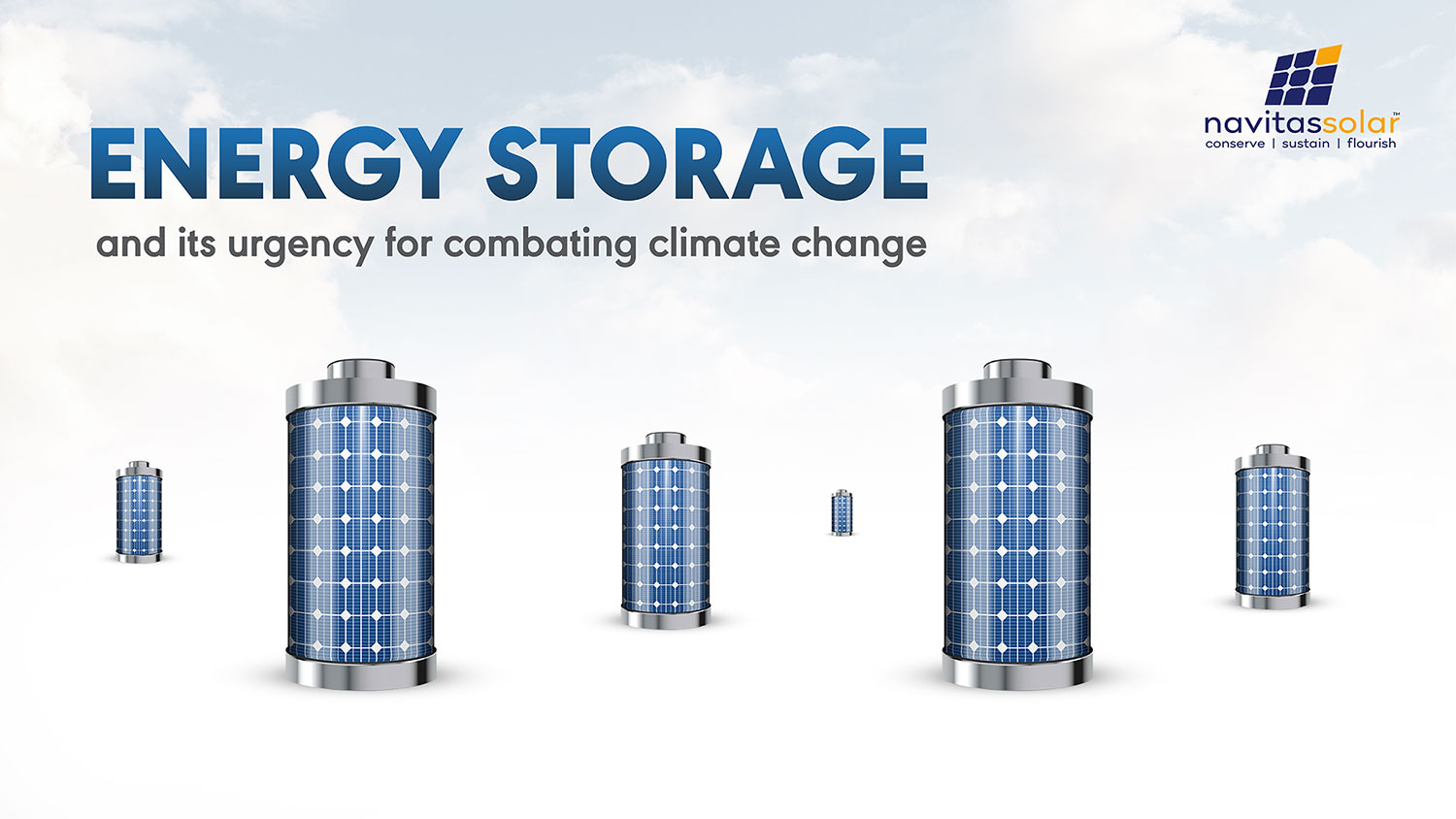Energy Storage and its urgency for combating climate change
It is no surprise that climate change has been a widespread, rapid, and intensifying concern over the past couple of decades. Scientists have been observing the changes in the planet’s climate in every region across the world.
In 2017, global warming reached the danger level of 1°C above the pre-industrial era levels. This increase in human-induced warming is at a rapid pace of 0.2°C per decade. The decade of 2011-2020 was the warmest decade on record, in a diligent long-haul climate change pattern and the current decade is poised to break that record. Heatwaves and higher temperatures, as a rule, affect the poorer communities of the world more than the others. In numerous areas across all seasons, the temperature has already gone past the global average. There’s also a threat of global warming reaching up to 2°C by the year 2050. What this means for our community is that there are large and escalating risks to human lives due to this. This warming level would bring about 29 extra days of unbearable heat all over the Globe!
All this is happening, and what are we doing about it? Well, this is where the energy storage devices come into the picture.
Experts and scientists believe that to restrict global warming beneath 2°C, energy storage capacities are to be significantly (as much as 3 times!) increased by the year 2050. Energy capacity in 2014 was 140 GW globally, which will need to reach up to 450 GW by 2050 in order to limit the temperatures below 2°C.
Scientists agree that energy storage is a crucial piece of the situation to settle environmental change. But why is energy storage and its effectiveness is so important?
One explanation is that energy storage can adjust with the demand-supply gap of renewable energy. In simpler terms, the stored energy from solar or wind powered devices on the grid can be useful on days when the sun is hidden behind the clouds, or the wind doesn’t blow.
There are various sorts of storage devices that can store renewable energy from solar and many more are arising as the need for innovation emerges. Some of the examples include,
- Hydrogen Energy Storage
- Thermal Storages
- Batteries
- Mechanical Storage Devices
Now let’s understand all these devices in brief.
- Hydrogen Energy Storages
It is a relatively new system wherein the extra energy generated by renewables at the time of low energy demand is used for powering the Electrolysis. At both large and small scales, Hydrogen Storage is becoming the innovation that is not only capable of storing energy on a local level but also for circulation through international supply chains. However, regardless of a promising potential due to its flexibility and capacity, Hydrogen has still not been widely embraced as an energy producer.
- Thermal Storages
Generally, thermal storage refers to the capture and release of heat and energy generated from solar power. Geo-Thermal Energy Storages are also there which include boring extremely deep boreholes close to earthy cracks. For instance, the geysers in Iceland. With molten salt and liquid air, technology is on the verge of developing more efficient Thermal Storage Devices.
- Batteries
The oldest, and most widely used storage devices are the good, old batteries. Batteries are cells with a cathode and an anode. Various types of batteries include Lithium-ion, lead-acid, nickel-cadmium, and sodium-sulfur which are used in solar systems. With phenomenal performance, low expenses, and a longer lifetime, these batteries are going to dominate the market for long.
- Mechanical Storages
Mechanical Storages are apparently the easiest storage devices that draw on the active powers of rotation or gravitation to store extra energy. They convert surplus solar power into mechanical power, which is converted back into electricity for later use. Flywheels and compressed air systems are some of the common mechanical devices whereas gravitational energy is an emerging innovation in the latest times.
To curb climate change, and decrease emissions from electricity, heating, and cooling needs, energy storage is going to play a vital role. At the local level, it can include stronger and adaptable energy frameworks with more significant levels of energy security through the coordination of locally generated energy. For the private sector, with the consistent development of offered services, energy storage can become an emerging business opportunity. And from the perspectives of the citizens of all countries, Energy storage can hold the benefit of improved control of energy costs and origin.
Leading roof-top solar system providing companies, like Surat based Navitas, are providing total solutions for adopting solar rooftop systems. Currently, Navitas offers mainly two options to go for it. One option is to install only solar panels and instead of storing it, submit the generated power to the state power grids and get benefits in one’s power bills. Another option is to have solar panels, with battery and inverter, so that the power generated through your own solar panels can be right away stored as well as used in the home, office, or any other institution.
In times when we are facing challenges of climate change and power crisis across the globe, we have to find and adopt innovating ways of harnessing and storing renewable energy.


 Online | Privacy policy
Online | Privacy policy
Related Posts
You May Also Like
Bonito Series: Driving Innovation in…
Read MoreTOPCon Series: The Next Generation…
Read MoreValuable Points to Remember During…
Read MoreNavitas Planet Partners with Hysolwin…
Read MoreDriving Towards a Sustainable Future:…
Read MoreWhy Do Top-Grade EVA Sheets…
Read MoreBonito Series: Driving Innovation in…
Read MoreTOPCon Series: The Next Generation…
Read MoreValuable Points to Remember During…
Read MoreNavitas Planet Partners with Hysolwin…
Read MoreDriving Towards a Sustainable Future:…
Read MoreWhy Do Top-Grade EVA Sheets…
Read MoreBonito Series: Driving Innovation in…
Read MoreTOPCon Series: The Next Generation…
Read MoreValuable Points to Remember During…
Read MoreNavitas Planet Partners with Hysolwin…
Read More